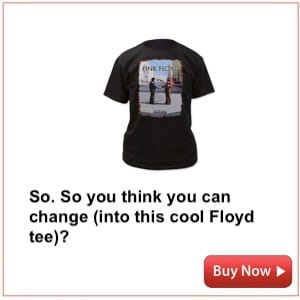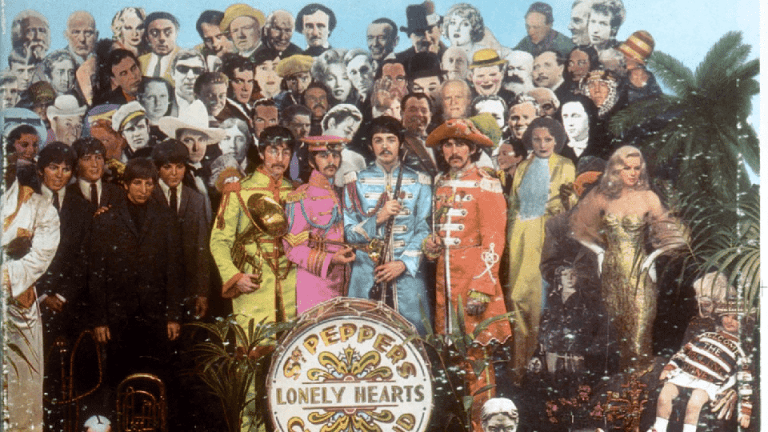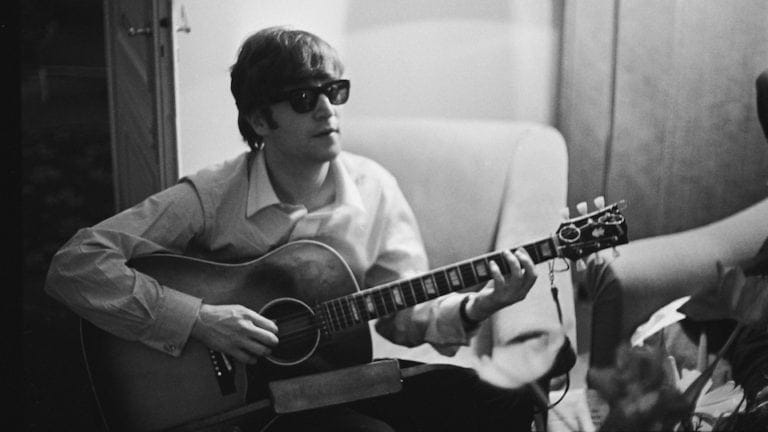Follow us
Muzak: Noiseless Noise or Mind Games?

Do you remember that time in Woolworths, say, around 1969? No, not the time you spent running around the carousel of racked clothing. I’m talking about those carefree strolls with your parents, looking around and hearing a distant sound from above: cascading violins, sumptuous organ fills, and shimmering strings. That, my friend, was Muzak.
To a generation that can tune out the interference of iHeart Radio broadcasting enough Justin Bieber to distract from playing with the Xbox console at Walmart, Muzak means nothing. Relevant, that is.
Muzak (or muzak, more on the capitalization later), began around the turn of the early 20th century. While most of America was dry-docked with Prohibition or perusing the first issue of Reader’s Digest, Muzak was conceived and invented by a former U.S. Army major general in 1922.
George Owen Squier, with leanings more scientific than military, patented his invention of sending music through electrical power lines to a box that looked like a generator and called it Muzak (a blend of the words music and the popular film company Kodak). The actual music was cut exclusively for those residents who paid the service fee on their electrical bill.
However, technology reared its ugly head by 1935 with the advent of the radio. Why pay when it’s coming over the airwaves for free? Squier switched lanes and began to focus on business avenues that could pipe music (from records) through commercial buildings as a subscription service: restaurants, hotels, offices factories…and a few elevators. And with that came the ability to customize playlists to suit clients’ needs.
The channeling of Muzak was a breakthrough in mass public consumption not just of music itself, but the target audiences – especially retail – sought to influence. And as Muzak became more pervasive and invasive in the 1950s, the company raised the stakes with the pseudo-scientific term “Stimulus Progression.”
Rather than sit back and have a monotonous stream waft throughout the workday, Muzak was programmed in 15-minute increments, followed by 15 minutes of silence. The instrumental arrangements became louder and brassier in those blocks to ostensibly motivate employees and pick up the pace for retail shoppers, thereby increasing work productivity and spending habits.
The novelty of “Stimulus Progression” did have its detractors who believed that millions of people were being subtly brainwashed and had a hold on the subconscious thoughts of mankind. While this was nicely spun rhetoric, as a marketing tool held dear to Muzak, it was a goldmine that allowed near domination of something we all knew little about.
The shift in technology throughout the 1950s and 60s (and the advent of switching from vinyl records to reel-to-reel tape) allowed Muzak to become more customized (orchestras that could be utilized regionally, franchises close to metropolitan areas) and saturate the landscape indefinitely. The leap to FM radio subcarriers had Muzak permeating Eisenhower’s White House and then onto the moon-bound Apollo 11.
Back on Earth, a genre sprang from Muzak – “beautiful music” – which took the concept farther (and farther than it should have, some argue). Ultra-syrupy arrangements of popular music, cast upon the public by Mantovani’s Orchestra and Percy Faith, went hand-in-hand with upstart FM stations programming what was defined as ‘easy listening.’ Was there no end to the suffering that blanketed our every waking hour?
In essence, that was done for us. The cultural inroads of folk and rock lyrics, protests in the 70s, and the general waking up of society handed Muzak a slope to slide down. Some can thank Brian Eno who was so aggravated by Muzak (or muzak) that he turned pseudo-science into a new art form – ambient – with the release of Music For Airports in 1978. Even rocker Ted Nugent seriously put forth a $10 million bid in 1986 to buy Muzak just so he could dismantle it. Obviously, Muzak hit a chord, but their finely tuned efforts were starting to hit bum notes.
As with any business that walks with blinders on, Muzak failed to keep up with the times. The change in consumer tastes throughout the 90s bundled with the rise of similar companies now able to license original recordings and move them to the foreground hastened Muzak’s descent. Despite re-branding changes, several buyouts, and being rescued from the trenches more than once, in 2013 Muzak as we knew it went down the elevator shaft.
But…the concept is not completely extinct. It actually moved on and can be felt in hundreds of iterations throughout the global marketplace. You may be at the self-checkout and unknowingly start humming that AM radio hit from the mid-seventies you didn’t know you forgot as you sneak that forbidden candy bar into your cart. Or shopping at that high-end retail store that smells wonderful with a tailor-made soundtrack swirling around you, while flat screen monitors beam at you from every wall. That, my friend. is your Muzak.
-Amy Hughes
Photo by Kelly (Pexels.com)


















Thanks for this piece. Didn’t know M(m)uzak’s origins. For some of us who make our own mix tapes/CDs/flash drives, the current Spotify or “Alexa, play [fill in the blank]” type availability is the 21st Century ubiquitousness of Muzak. Not all bad but there’s something a bit sad about the ease with which playlists can be conjured these days.
Great piece! You can at least say one good thing for Muzak – it was all real music, played by real musicians, on real instruments.
Did I miss the part about explaining the capitalization? Was Muzak once located on Capital Hill in Seattle?
The capitalization was drawn from Squier incorporating it as a business model. The overall term ‘muzak’ became the generalized term for that style. And yes – Muzak did for a while locate it’s company to Seattle. I believe Eddy Veder from Oearl Jam once work there when it was called Yesco.
Thanks for a nice summation, Amy! Yesco (who did “foreground” music, playing commercially available music) was based in Seattle, merged with Muzak and kept the better-known name. (AEI was a local competitor, and they had the Cap Hill offices, putting the Hendrix statue out front.) Muzak’s Seattle homes moved around a bit – Fremont, Belltown, Wallingford (after the main hq moved to the Carolinas in 2000) and Downtown, before closing the local office in 2007. Several local rockers did stints with the company, including one of the founders of SubPop. I was a Seattle-based Audio Architect (music programmer) with the company from 1996-2007, specializing in all kinds of non-pop areas (classical, jazz, Hawaiian, new-age, world music). When they went bankrupt, the assets were acquired by a Canadian company, but they have spun off to be independent again in recent years; we also built a huge part of the company doing messaging services, ranging from overhead announcements in malls to telephone answering systems to the sales pitches at gas pumps.
Yes! I had done some deep dive research and discovered all the iterations of Muzak, including the ‘competition’ with Yesco… which in turn begat the merger later on. The Seattle viewpoint was very interesting, including your mentions of the figures in ‘grunge’ rock there. Fascinating.
It’s really an interesting story how the company evolved, and I hope you had fun digging into it. I think your feature tells, in such a limited space, a great tale in a way that should make people realize there was so much more than the classic “elevator music” story.
For most of my years there, we had a division filled with great music “heads,” and were right on the cutting edge of many music trends, so we could provide the latest and best to clients before they were aware of a particular music scene. Many of my former colleagues still work for divisions of what the company has evolved to be.
Fun fact: when the company moved from Seattle to Fort Mill SC (just south of Charlotte NC) in 2000, into a cool building they designed, there was NO MUSIC piped into the elevator!
Wonderful piece… As one of the Muzak generation (well, one who grew up with its emergence), this is so interesting to learn its back story….. What fun!…great idea!
…Remember, Lennon sang to McCartney in his 1971 “How Do you Sleep”…. “The sound you make is muzak to my ears”